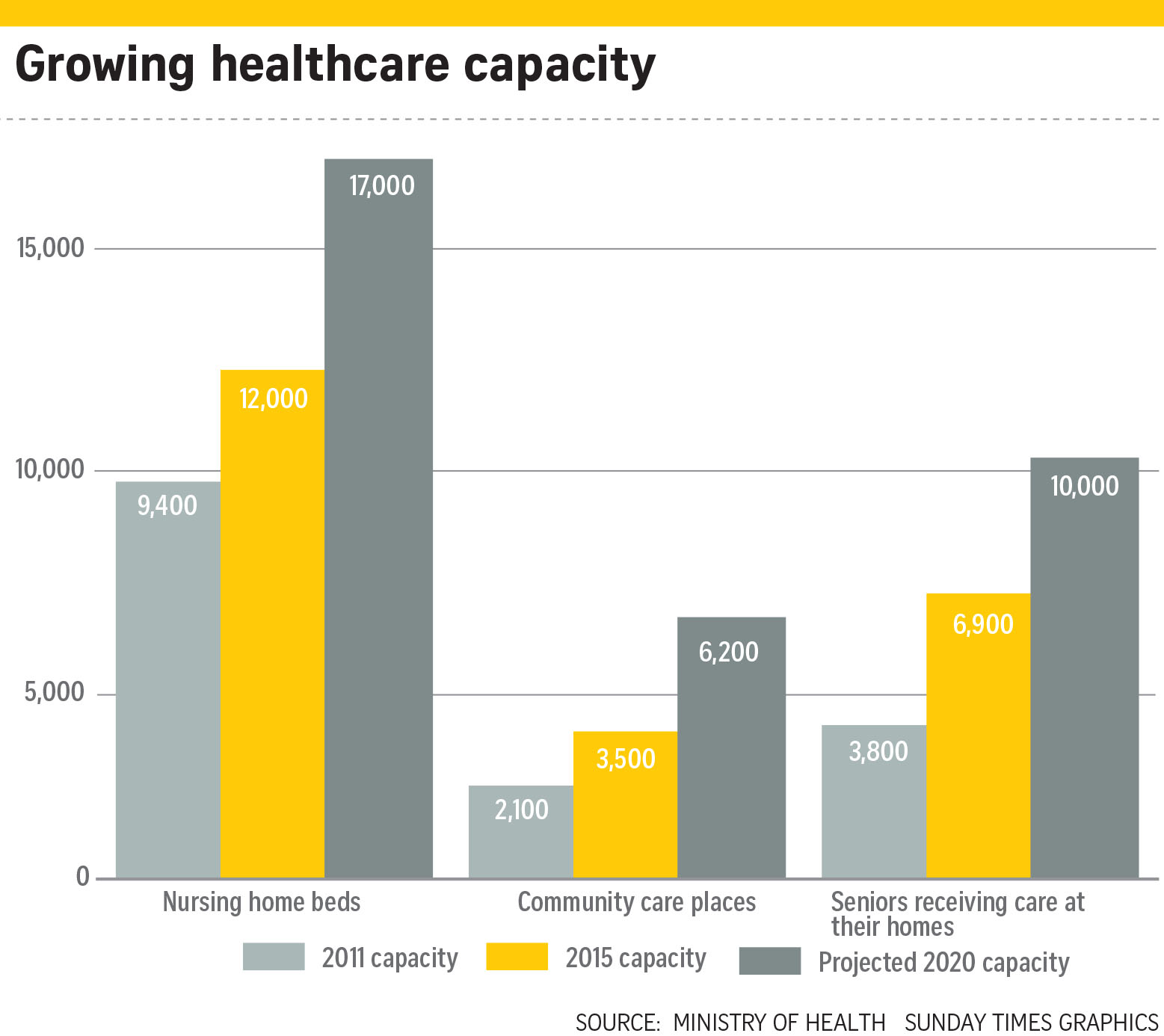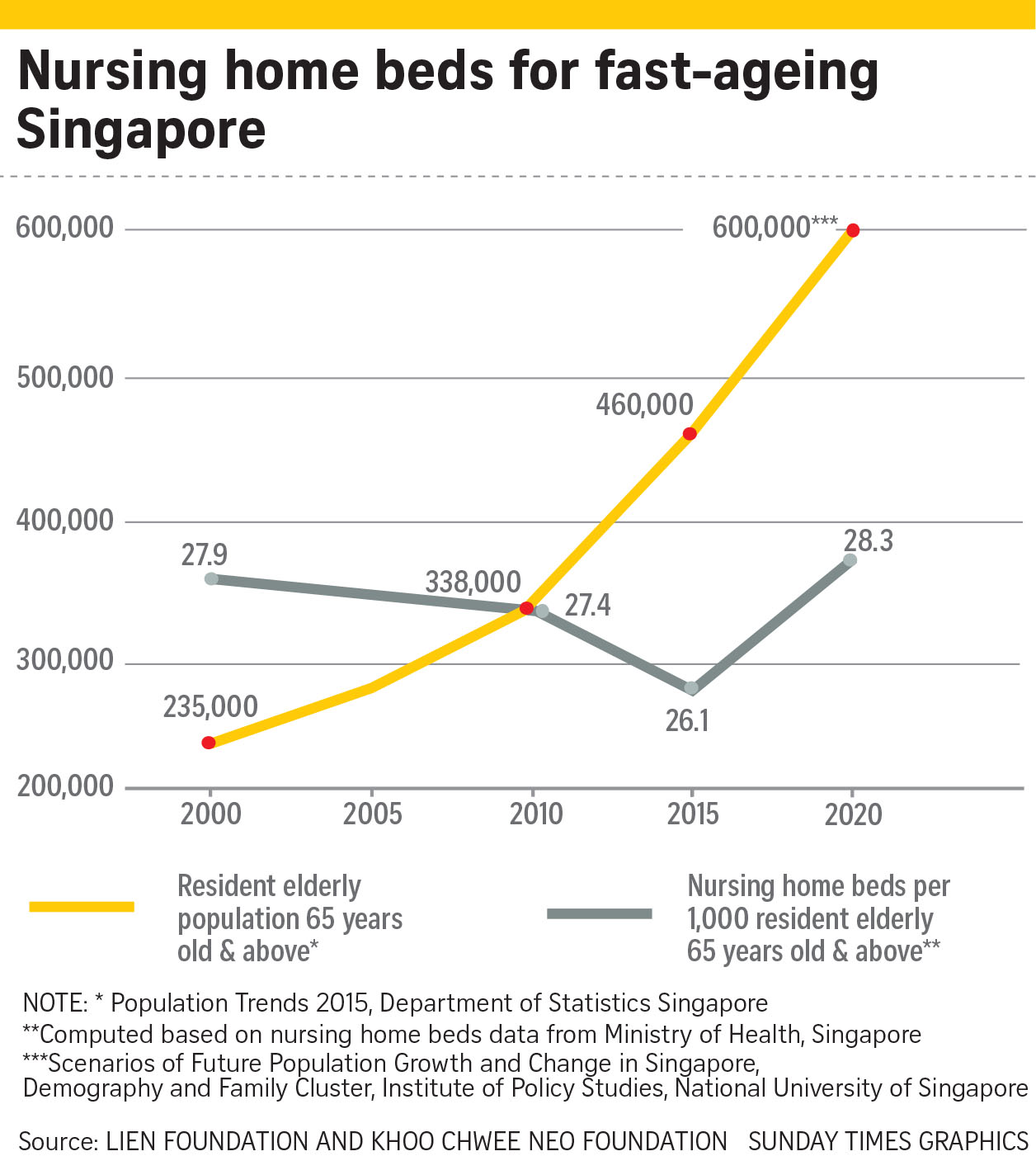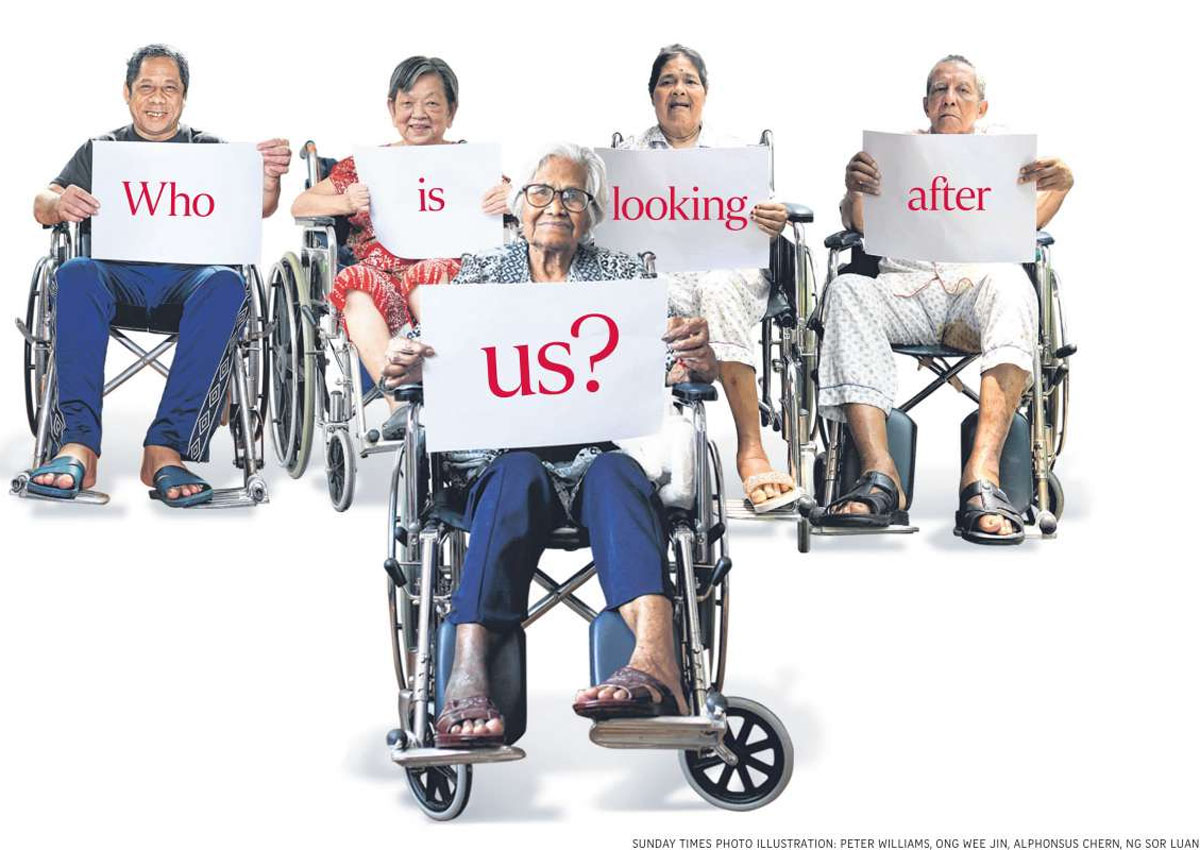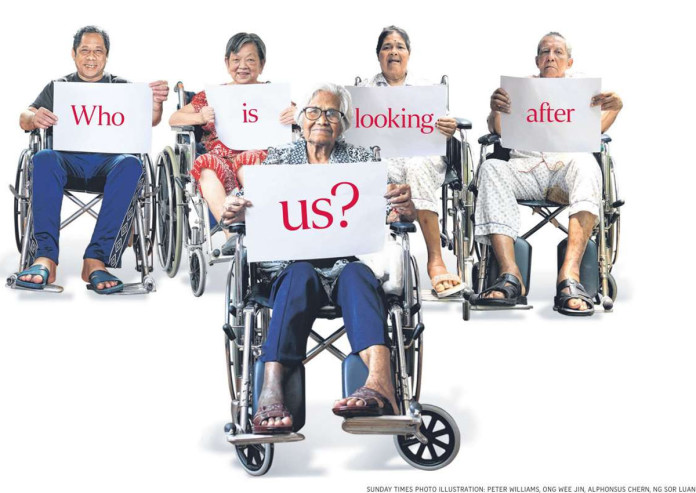Home. Nursing home. Hospital and community hospital. Ageing in place. Mrs Theresa Hogan, 88, has experienced them all over the past 15 years.
The widow was living with her son when she suffered a stroke that took away her ability to walk or eat.
So, she was put in a nursing home. The pros: She liked the place as it was clean and its nurses took good care of her. She also enjoyed attending its exercise and flower arrangement classes.
The cons: She was lonely, even though she slept in a room with nine other people. Mrs Hogan recalls: “It was dull. The people there couldn’t really communicate, and my family hardly visited. I would lie on my bed, just looking at the sky outside the window.”
After five years, she went to live with a grandson who managed to obtain a two-room rental flat in Whampoa. She had housekeeping services from homecare company Comfort Keepers, and the non-pro- fit Tsao Foundation helped link her up to services in the community and monitor her well-being.
Which was just as well. Over the past two years, the frail grandmother has had five falls at home, and had to be warded at Tan Tock Seng Hospital and Ren Ci Community Hospital.
Then, four months ago, her grandson died of lung cancer. Mrs Hogan decided to continue living at home alone – what the Health Ministry (MOH) terms ageing in place. Neighbours cook or buy lunch for her every day.
Mrs Hogan’s situation of multiple aspects of care in her senior years is not unique.
By 2030, one in every three people here is projected to need some form of eldercare service.
Against the current backdrop of different settings in which to grow old, Insight looks at what is being done to care for the seniors of the future, and whether those moves are fast enough to meet demand.
BEST PLACE TO GROW OLD IN?
Singapore is one of the fastest ageing societies in the world: by 2030, one in four people, or more than 900,000 people, will be aged 65 and above, double the number now.
Ageing is the single most important demographic shift that will affect the future of Singapore, Senior Minister of State for Health Amy Khor said earlier this year when launching a $3 billion Action Plan for Successful Ageing.
The plan’s 70 initiatives to help the elderly lead healthy and active lives include a review of the financing system for long-term care, raising the re-employment age and building more centres where seniors can get physiotherapy or take part in activities.
Health Minister and chairman of the Ministerial Committee on Ageing Gan Kim Yong said when initial details of the national plan were released last year: “We need to plan ahead to ensure that Singaporeans need not worry about getting old, but instead embrace new opportunities that come with longevity. We want Singapore to be the best place for Singaporeans to grow old in, and a model for successful ageing.”
Yet a recent survey of 1,000 Singaporeans, commissioned by NTUC Income and the Lien Foundation, found that eight in 10 Singaporeans are worried about growing old.
Topping their worries is whether they will be able to look after themselves. Financial concerns such as running out of savings comes next.
This is even as the traditional Asian approach of caring for aged parents at home is still the “retirement plan” for most. However, the best-laid plans can fail when the elderly need round-the-clock specialised care for illness. Some people also do not have family members to rely on or cannot afford a maid.
Last month, Mr Gan said Singapore will need to make “deep and fundamental changes” to the way care is delivered to seniors, as the country ages and more of its citizens suffer chronic ailments.
The Government’s focus has been shifting from hospitals to the community – such as polyclinics, nursing homes and daycare facilities – to let the elderly be cared for at home and in familiar neighbourhoods.
There has been much discussion of ageing issues over the past 20 years, and from the early 2000s, MOH has been investing heavily in expanding home-based care services. But are there adequate community resources to ensure the elderly can keep living at home?
Despite the years of discussion, long- term private and public residential care options for the elderly are limited.
For many frail elderly people who live with family without the necessary time or nursing expertise, or for those living alone who are unable hire a full-time helper, nursing homes remain their main option.

LONG-TERM CARE: ENOUGH BEDS?
In barely three years, there will be 610,000 people in the above-65 age group, but a projected capacity of only 6,200 centre-based daycare and 10,000 home-based care services.
As of last year, Singapore had 26.1 nursing home beds per 1,000 people aged 65 and above – the lowest proportion in 15 years (see chart) – and well below the OECD average of 45.2 beds.
To put that in perspective, though, researcher Radha Basu notes in her 130-page report on the state of nursing homes here: “With fewer beds than many advanced countries and relatively stronger family networks, it is no surprise that Singapore has very few older folks in nursing homes.”
But she cautions: “As families shrink in size, Singapore will need more long-term care options.”
In countries like the US, Australia and Finland, about 5 per cent of the elderly population live in some form of residential aged care facility such as nursing homes or assisted living. Going by this, about 50,000 seniors in Singapore will need such facilities by 2030. But there are only about 12,000 beds in nursing homes.
This means that even if 95 per cent of the elderly live and die at home, Singapore may need nearly 50,000 alternative senior living options by 2030, says Ms Basu.
When The Sunday Times asked MOH how it comes up with its planning targets for services and facilities for the elderly and why they were not ramped up more and earlier, a spokesman said the demand for aged care services is projected based on a combination of factors.
She explained: “Beyond the population of seniors, we also factor in the incidence of disability, the level of disability and utilisation rate.
“As the needs and circumstances of seniors and their caregivers are different, we have to plan for a diverse range of options to meet the needs.
“Needs are also not static. In tandem with changing social trends, utilisation of different options will change and so we will conduct regular reviews of our projections and adjust our development plans.”
For those who do not need intensive nursing care but are too frail to age in place at home, there is the option of assisted living, which is common in countries such as Australia, Britain and the US. They provide a more home-like environment, such as private rooms, for more independent seniors who need help with personal care.
There are few such standalone facilities here, though the Government says the assisted living concept can take the form of people continuing to live in their own HDB flats but having access to aged care services in their neighbourhoods.

NO ONE-SIZE SOLUTION
It is clear that the more than 900,000 seniors by 2030 will have different needs, financial capabilities and expectations which no single player or model can possibly cater to. A wider range of options will be called for.
The authorities acknowledge the challenges that lie ahead.
“We agree that we should seek to enhance the diversity of aged care options and we welcome more ideas to help our seniors age well in place,” says the MOH spokesman. “We hope we can see new and exciting models emerging to meet our seniors’ needs, that are uniquely Singapore.”
As for Mrs Hogan, when The Sunday Times tried to visit her, she was back at a community hospital after busting her hip in yet another fall at home. She clutched a soft toy rabbit everywhere she was wheeled to.
“My great-granddaughter gave it to me last month for my birthday and I also have a bear, tortoise and doll on my bed at home (in the Whampoa flat). I can’t sleep here without the rabbit,” she says.
For Mrs Hogan, then, the “home” to grow old in and die in has come to mean anywhere that she feels loved.
jantai@sph.com.sg
tohyc@sph.com.sg

This article was first published on Nov 06, 2016.
Get a copy of The Straits Times or go to straitstimes.com for more stories.







